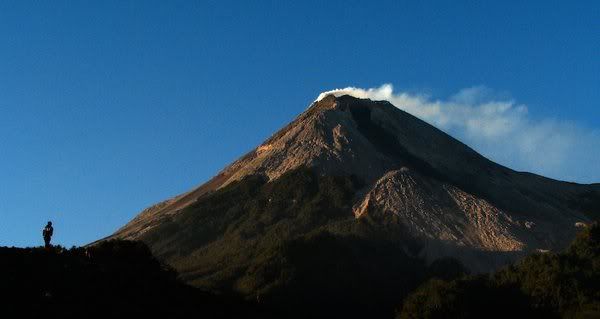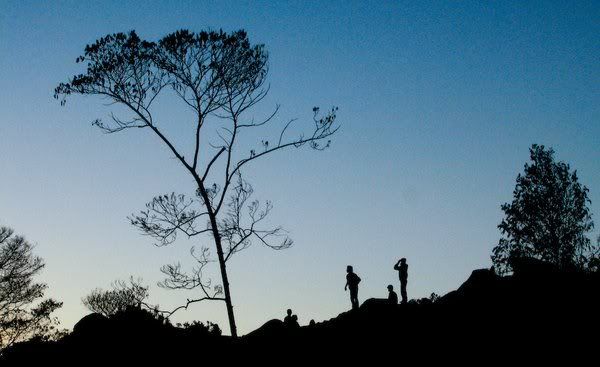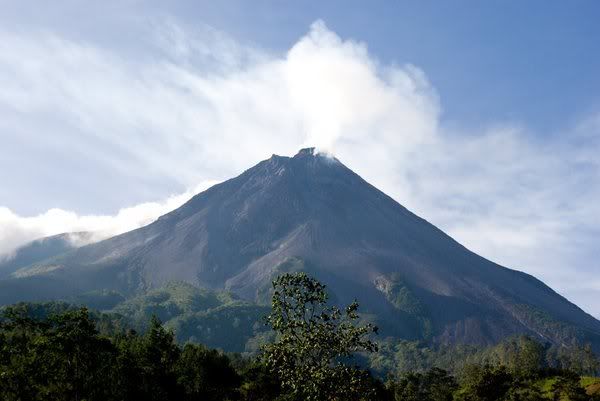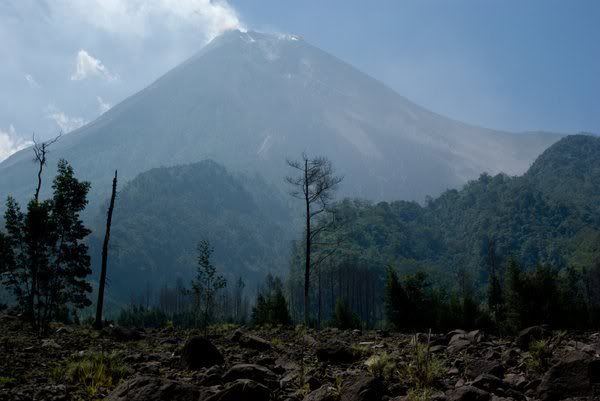Keraton Railway Museum
In the surrounding area Ngayogyakarta Palace, there is a special museum that does not exist elsewhere. Museum Railway Museum is the palace of Yogyakarta. The train that became the museum’s collection is not ketera fire or steam, but the carriage of Yogyakarta Sultanate Palace. The trains used to be the main vehicle used Yogyakarta Sultanate, whether for its palace and personal.
The presence of Railway Museum had been pioneered in the reign of Sri Sultan Hamengkubuwono VII. Train museum collections have aged decades and some have reached the age of hundreds of years. Some are still used in ceremonies Palace greatness. The trains which are never used anymore due to age considerations and historical factors that have passed the old trains.
Naming each horse-drawn carriage carried out according to the beliefs of the people of Java will be a spirit or force on each object. Moreover, the naming done because these trains have been a lot of merit and has been regarded as a heritage palace. Trains are owned by their respective palace was named and has a special usefulness.
Visiting Sultan Palace Railway museum mean look at the history of travel Ngayogyokarto Sultanate Palace. Train-train or are in the museum called “Kareta” become artifacts of various important events or circumstances Keraton Yogyakarta technology used by the royal palace at the time. In addition, kareta-kareta also showed diplomatic cooperation with the outside world palace.
Based on the shape, trains of palace is divided into 3 types. The first is to train the roof open and two-wheeled. Examples of this type is a train carriage Kapolitan. The second type is the open roof rail and four-wheel, for example Kyai Jongwiyat and all trains that use the name Landower. Last type is the closed roof rail and four-wheel, for example Nyai amulets, Kyai Garudayaksa, and Kyai Wimanaputra.
Forms also train differentiate functions and users. Train type first used by the Sultan for recreational vehicles. The second type is used by some prominent groups like the guards of the sultan, a group of dancers palace, and the commanders of the soldiers palace. The third is a special train sultan and his family. Kyai Ratapralaya Rotowijayan made in the village is a special hearse for the Sultan who was dead. Historically, this train only used twice.
As a heritage palace, trains tesebut also received tribute in the form Jamasan event. Jamasan is the activity of bathing, giving “eat” with food in the form of offerings, and pray for all heritage objects. Jamasan heritage palace always falls on Tuesday or Friday Kliwon first of each month of Suro (first month in the Javanese calendar). Sultan Palace Ceremony jamasan heritage held in two places, namely in Gedong Heritage and the Palace Museum Train Yogyayakarta.
Implementation Jamasan heritage at the Museum of the train specifically for the railway heritage only. Jamasan ceremony led by elder railway heritage palace courtiers who guarded museum. Trains are required each year is to train dijamasi Nyai amulets. The train is a train oversized amulets Nyai Sultan HB I through IV Sultan HB regarded as an elder of other trains. Trains made in the Netherlands in 1750 is a provision of the Governor-General Jacob Mossel.
In summary, if any order of year of manufacture or purchase, kareta-kareta are detailed as follows.
1. Kareta Kanjeng Nyai Jimad. This is an heirloom Kerata Palace, built by the Dutch in 1750. The train was a gift from Spain who at that time already had trade relations with the kingdom. The train was used as a means of everyday transportation by Sri Sultan HB I-III. The train is pulled by eight horses. Entirely pristine condition. Train spring is made from buffalo leather. Every year, the month of Suro (Muharram), is bathing ceremony for this train.
2. Kareta Mondro Juwolo. This train is a train that is used by Prince Dipenogoro. The paint has been updated at the time of holding of the Festival Kraton Nusantara. The train is made by the Dutch in 1800 and drawn by six horses.
3. Kareta Kyai Manik Retno. The train was purchased in the reign of Sri Sultan HB IV, 1815. The train is made by the Dutch. The train was used by the Sultan together with the empress. Train for this excursion pulled by four horses.
4. Kyai Kareta Jolodoro. This train made the Netherlands in 1815 and is a relic of Sri Sultan HB IV. Train Jolodoro is kareta cruise (from the word “Jolo” which means to capture, and “Doro” meaning girl). Controller or stand behind the coachman. The train is pulled by four horses.
5. Kyai Kareta Wimono Putro. The train was purchased in the reign of Sri Sultan HB VI, precisely in 1860. Used at the time of the appointment ceremony of the crown prince. This train is still the original condition (wood color). The train was pulled by six horses.
6. Kareta Garudo Yeksa. The train is made by the Dutch in 1861, ie at the time of Sri Sultan HB VI. The train was used for the coronation of an emperor. This train eight horses pulled the same color and gender. The train is also called Kareta Kencana (kareta gold). Everything in the train is still original including symbol eagle made of 18 carat gold weighing 20 kg. Gold layer if scoured or cleaned will be eroded. Therefore, this train cleared ahead of time will only be used alone. It is said that about 6-7gram gold will be lost every time you scrubbed / cleaned. Crown made of brass and shaped like a peak Monas. It is said that Sukarno was using it to make a crown shape design Monas. Design of a train coming from Sri Sultan HB I. Interestingly, when the train doors opened, there will be stairs down by itself, as often found on the doors of the aircraft. Controlling a horse is only one person. The train was still used until now.
7. Kyai Kareta Harsunaba. The train is a means of daily transportation from the Sri Sultan HBVI-VIII. The train was purchased in 1870 and drawn by four horses.
8. Kyai Kareta Jongwiyat. The train is made in The Hague, Netherlands, in 1880. This train is a relic of Sri Sultan HB VII and used to manggala yudha or in war, for example to inspect a guard of soldiers and so forth. Sri Sultan HB VII was the sultan’s most lots to do battle with the Dutch. Kareta was drawn by six horses. At the time of Sri Sultan HB X married his daughter, this kareta re-use. Some parts of this kareta been undergoing renovations, such as paint colors that have been changed to yellow.
9. Blue Roto Kareta made in the Netherlands in 1901, precisely at the time of Sri Sultan HB VIII. The train is called Roto Blue because it is dominated by bright blue color that coats the train reaches the wheels. Used to manggala yudha for warlords. At the time HB X married his daughter, kareta is used to transport the besan in-law. Kareta was drawn by four horses.
10. Kus Kareta Ten. This train is a train made in the Netherlands in 1901, ie at the time of Sri Sultan HB VIII. Originally the train Landower and can be used for the bride. Green original paint has been changed to yellow and is believed to contain the political meaning (the color of one political party) at the time of repainting. Although it can be used as a bridal train, but the daughter’s wedding ceremony of Sri Sultan HB X recent kareta is not used by the bride.
11. Kus Kareta Ivory. The train was purchased on the Sri Sultan HBVIII. The train is made in the Netherlands in 1901 and drawn by four horses.
12. Kyai Rejo Pawoko. The train was created in 1901 during the reign of Sri Sultan HB VIII and intended as a means of transportation for younger siblings Sultan. The train is pulled by four horses. It is said that the train is purchased together with the birth of Bung Karno, namely in 1901.
13. Kareta Landower. Kareta was made by the Dutch in the era of the reign of Sri Sultan HB VIII in 1901. The train is pulled by four horses.
14. Kareta Landower Wisman. The train was purchased from the Netherlands in 1901, ie during the reign of Sri Sultan HB VIII. The train was once renovated in 2003. The train was used as a means of transportation at the time of sultan perform agricultural extension. The train is pulled by four horses.
15. Kareta Landower. The train was purchased on the Sri Sultan HB VIII in 1901. The train is made in the Netherlands. Previously, this train was exhibited at the Hotel Ambarukmo. The train is pulled by four horses.
16. Kareta Premili. Kareta is assembled in Semarang in 1925 with parts imported directly from Holland. The train is used to pick dancers Kingdom. The trains are pulled by four horses, the wheels on one section written “G. Barendsi”.
17. Kyai Kareta Kutha Kaharjo. Purchased this train at the time of the reign of Sri Sultan HB IX, and made in Berlin in 1927. Used to accompany the events organized by the Palace, the train is pulled by four horses.
18. Roto Kareta Praloyo. This train is a corpse kareta purchased at the time of Sri Sultan HB VIII in 1938. The trains that brought the corpse of Sultan Hamengkubuwono IX of the palace toward Imogiri. The train is pulled by 8 horses.
19. Kyai Kareta Jetayu. The train was purchased on the Sri Sultan HB VIII in 1931. The trains are intended as a means of transportation for the daughters of the Sultan who was a teenager it, drawn by four horses with a controller that directly above the horse.
20. Kareta Kapulitin. Is kareta for horse racing / gig. Train purchased at the time of the reign of Sri Sultan HB VII was fond of equestrian sports. Kareta is only drawn by a horse alone.
21. Kareta Puspoko Kyai Manik. Kareta was made in Amsterdam, Netherlands. The train was used as a means of accompaniment Palace events including for the bridesmaids. The train is pulled by four horses.
22. Kareta Landower Surabaya. Kareta has been ordered from the Sri Sultan HB VII, but was only able to be used during the reign of Sri Sultan HB VIII. This Swiss-made trains and used for transportation of agricultural extension in Surabaya.
23. Kyai Noto Puro. The train is made in the Netherlands during the reign of Sri Sultan HB VII. The train is used for activities in the war. Currently, the physical form has been undergoing renovation. The train is pulled by four horses.
Kareta-kareta cleaned each year through the ritual called Jamasan. Interestingly, each time held Jamasan, Train Nyai amulets must always be accompanied by a another train. The train that accompany selected alternately each year. In the event Jamasan it, all those involved in the ceremony must be male and wearing traditional clothes complete with surjan Yogyakarta and blangkon. Because of the unique and only happens once a year, this traditional ceremony would be a separate attraction for tourists.
In addition to the ceremony procession, there is one thing unique and interesting. During the procession jamasan, many who are generally elderly audience crowded around the train heritage. They waited patiently to get the water used to wash the wagon, which in local language is often termed as “ngalap blessing.” Until now, there are still many people who believe that the water runs trains efficacious give fertility to the fields, longevity, and health. Even the few who did not wash your face with water runs trains that they collect from the drains in the vicinity of the ceremony.
The presence of Railway Museum had been pioneered in the reign of Sri Sultan Hamengkubuwono VII. Train museum collections have aged decades and some have reached the age of hundreds of years. Some are still used in ceremonies Palace greatness. The trains which are never used anymore due to age considerations and historical factors that have passed the old trains.
Naming each horse-drawn carriage carried out according to the beliefs of the people of Java will be a spirit or force on each object. Moreover, the naming done because these trains have been a lot of merit and has been regarded as a heritage palace. Trains are owned by their respective palace was named and has a special usefulness.
Visiting Sultan Palace Railway museum mean look at the history of travel Ngayogyokarto Sultanate Palace. Train-train or are in the museum called “Kareta” become artifacts of various important events or circumstances Keraton Yogyakarta technology used by the royal palace at the time. In addition, kareta-kareta also showed diplomatic cooperation with the outside world palace.
Based on the shape, trains of palace is divided into 3 types. The first is to train the roof open and two-wheeled. Examples of this type is a train carriage Kapolitan. The second type is the open roof rail and four-wheel, for example Kyai Jongwiyat and all trains that use the name Landower. Last type is the closed roof rail and four-wheel, for example Nyai amulets, Kyai Garudayaksa, and Kyai Wimanaputra.
Forms also train differentiate functions and users. Train type first used by the Sultan for recreational vehicles. The second type is used by some prominent groups like the guards of the sultan, a group of dancers palace, and the commanders of the soldiers palace. The third is a special train sultan and his family. Kyai Ratapralaya Rotowijayan made in the village is a special hearse for the Sultan who was dead. Historically, this train only used twice.
As a heritage palace, trains tesebut also received tribute in the form Jamasan event. Jamasan is the activity of bathing, giving “eat” with food in the form of offerings, and pray for all heritage objects. Jamasan heritage palace always falls on Tuesday or Friday Kliwon first of each month of Suro (first month in the Javanese calendar). Sultan Palace Ceremony jamasan heritage held in two places, namely in Gedong Heritage and the Palace Museum Train Yogyayakarta.
Implementation Jamasan heritage at the Museum of the train specifically for the railway heritage only. Jamasan ceremony led by elder railway heritage palace courtiers who guarded museum. Trains are required each year is to train dijamasi Nyai amulets. The train is a train oversized amulets Nyai Sultan HB I through IV Sultan HB regarded as an elder of other trains. Trains made in the Netherlands in 1750 is a provision of the Governor-General Jacob Mossel.
In summary, if any order of year of manufacture or purchase, kareta-kareta are detailed as follows.
1. Kareta Kanjeng Nyai Jimad. This is an heirloom Kerata Palace, built by the Dutch in 1750. The train was a gift from Spain who at that time already had trade relations with the kingdom. The train was used as a means of everyday transportation by Sri Sultan HB I-III. The train is pulled by eight horses. Entirely pristine condition. Train spring is made from buffalo leather. Every year, the month of Suro (Muharram), is bathing ceremony for this train.
2. Kareta Mondro Juwolo. This train is a train that is used by Prince Dipenogoro. The paint has been updated at the time of holding of the Festival Kraton Nusantara. The train is made by the Dutch in 1800 and drawn by six horses.
3. Kareta Kyai Manik Retno. The train was purchased in the reign of Sri Sultan HB IV, 1815. The train is made by the Dutch. The train was used by the Sultan together with the empress. Train for this excursion pulled by four horses.
4. Kyai Kareta Jolodoro. This train made the Netherlands in 1815 and is a relic of Sri Sultan HB IV. Train Jolodoro is kareta cruise (from the word “Jolo” which means to capture, and “Doro” meaning girl). Controller or stand behind the coachman. The train is pulled by four horses.
5. Kyai Kareta Wimono Putro. The train was purchased in the reign of Sri Sultan HB VI, precisely in 1860. Used at the time of the appointment ceremony of the crown prince. This train is still the original condition (wood color). The train was pulled by six horses.
6. Kareta Garudo Yeksa. The train is made by the Dutch in 1861, ie at the time of Sri Sultan HB VI. The train was used for the coronation of an emperor. This train eight horses pulled the same color and gender. The train is also called Kareta Kencana (kareta gold). Everything in the train is still original including symbol eagle made of 18 carat gold weighing 20 kg. Gold layer if scoured or cleaned will be eroded. Therefore, this train cleared ahead of time will only be used alone. It is said that about 6-7gram gold will be lost every time you scrubbed / cleaned. Crown made of brass and shaped like a peak Monas. It is said that Sukarno was using it to make a crown shape design Monas. Design of a train coming from Sri Sultan HB I. Interestingly, when the train doors opened, there will be stairs down by itself, as often found on the doors of the aircraft. Controlling a horse is only one person. The train was still used until now.
7. Kyai Kareta Harsunaba. The train is a means of daily transportation from the Sri Sultan HBVI-VIII. The train was purchased in 1870 and drawn by four horses.
8. Kyai Kareta Jongwiyat. The train is made in The Hague, Netherlands, in 1880. This train is a relic of Sri Sultan HB VII and used to manggala yudha or in war, for example to inspect a guard of soldiers and so forth. Sri Sultan HB VII was the sultan’s most lots to do battle with the Dutch. Kareta was drawn by six horses. At the time of Sri Sultan HB X married his daughter, this kareta re-use. Some parts of this kareta been undergoing renovations, such as paint colors that have been changed to yellow.
9. Blue Roto Kareta made in the Netherlands in 1901, precisely at the time of Sri Sultan HB VIII. The train is called Roto Blue because it is dominated by bright blue color that coats the train reaches the wheels. Used to manggala yudha for warlords. At the time HB X married his daughter, kareta is used to transport the besan in-law. Kareta was drawn by four horses.
10. Kus Kareta Ten. This train is a train made in the Netherlands in 1901, ie at the time of Sri Sultan HB VIII. Originally the train Landower and can be used for the bride. Green original paint has been changed to yellow and is believed to contain the political meaning (the color of one political party) at the time of repainting. Although it can be used as a bridal train, but the daughter’s wedding ceremony of Sri Sultan HB X recent kareta is not used by the bride.
11. Kus Kareta Ivory. The train was purchased on the Sri Sultan HBVIII. The train is made in the Netherlands in 1901 and drawn by four horses.
12. Kyai Rejo Pawoko. The train was created in 1901 during the reign of Sri Sultan HB VIII and intended as a means of transportation for younger siblings Sultan. The train is pulled by four horses. It is said that the train is purchased together with the birth of Bung Karno, namely in 1901.
13. Kareta Landower. Kareta was made by the Dutch in the era of the reign of Sri Sultan HB VIII in 1901. The train is pulled by four horses.
14. Kareta Landower Wisman. The train was purchased from the Netherlands in 1901, ie during the reign of Sri Sultan HB VIII. The train was once renovated in 2003. The train was used as a means of transportation at the time of sultan perform agricultural extension. The train is pulled by four horses.
15. Kareta Landower. The train was purchased on the Sri Sultan HB VIII in 1901. The train is made in the Netherlands. Previously, this train was exhibited at the Hotel Ambarukmo. The train is pulled by four horses.
16. Kareta Premili. Kareta is assembled in Semarang in 1925 with parts imported directly from Holland. The train is used to pick dancers Kingdom. The trains are pulled by four horses, the wheels on one section written “G. Barendsi”.
17. Kyai Kareta Kutha Kaharjo. Purchased this train at the time of the reign of Sri Sultan HB IX, and made in Berlin in 1927. Used to accompany the events organized by the Palace, the train is pulled by four horses.
18. Roto Kareta Praloyo. This train is a corpse kareta purchased at the time of Sri Sultan HB VIII in 1938. The trains that brought the corpse of Sultan Hamengkubuwono IX of the palace toward Imogiri. The train is pulled by 8 horses.
19. Kyai Kareta Jetayu. The train was purchased on the Sri Sultan HB VIII in 1931. The trains are intended as a means of transportation for the daughters of the Sultan who was a teenager it, drawn by four horses with a controller that directly above the horse.
20. Kareta Kapulitin. Is kareta for horse racing / gig. Train purchased at the time of the reign of Sri Sultan HB VII was fond of equestrian sports. Kareta is only drawn by a horse alone.
21. Kareta Puspoko Kyai Manik. Kareta was made in Amsterdam, Netherlands. The train was used as a means of accompaniment Palace events including for the bridesmaids. The train is pulled by four horses.
22. Kareta Landower Surabaya. Kareta has been ordered from the Sri Sultan HB VII, but was only able to be used during the reign of Sri Sultan HB VIII. This Swiss-made trains and used for transportation of agricultural extension in Surabaya.
23. Kyai Noto Puro. The train is made in the Netherlands during the reign of Sri Sultan HB VII. The train is used for activities in the war. Currently, the physical form has been undergoing renovation. The train is pulled by four horses.
Kareta-kareta cleaned each year through the ritual called Jamasan. Interestingly, each time held Jamasan, Train Nyai amulets must always be accompanied by a another train. The train that accompany selected alternately each year. In the event Jamasan it, all those involved in the ceremony must be male and wearing traditional clothes complete with surjan Yogyakarta and blangkon. Because of the unique and only happens once a year, this traditional ceremony would be a separate attraction for tourists.
In addition to the ceremony procession, there is one thing unique and interesting. During the procession jamasan, many who are generally elderly audience crowded around the train heritage. They waited patiently to get the water used to wash the wagon, which in local language is often termed as “ngalap blessing.” Until now, there are still many people who believe that the water runs trains efficacious give fertility to the fields, longevity, and health. Even the few who did not wash your face with water runs trains that they collect from the drains in the vicinity of the ceremony.











 Read more: http://epg-studio.blogspot.com/2009/06/widget-pengatur-halaman-untuk-kembali.html#ixzz1UA3ocoWT
Read more: http://epg-studio.blogspot.com/2009/06/widget-pengatur-halaman-untuk-kembali.html#ixzz1UA3ocoWT